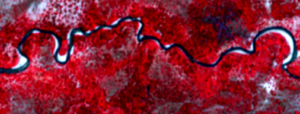Zero Flow 2020
MENU
The Zero Flow event dates are listed for the Ruaha River Sections next to the magnified remote sensing stations below. The basemap can be viewed here. The related satellite images are grouped per Ruaha River Section with the most recent images on top. The first zero flow event which occurs at the Mtera Reservoir section of the Ruaha River, can be found at the bottom of this post.
For low/zero-flow analysis of other years, please follow the link.
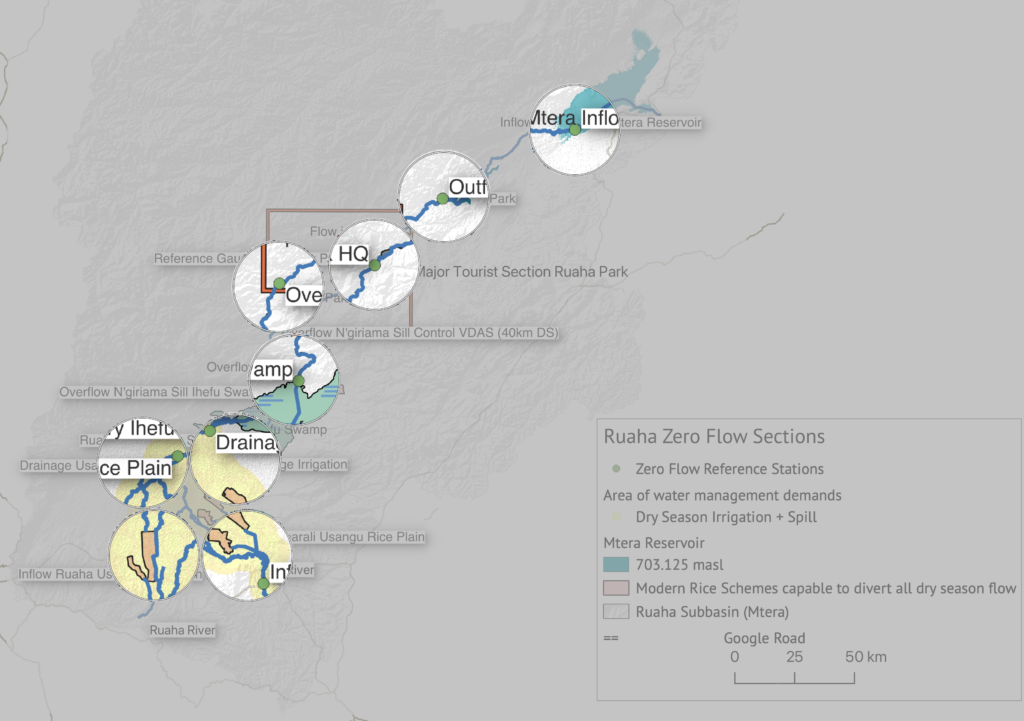
| Label | Ruaha Section Location | Observation/ 1st Zero Flow |
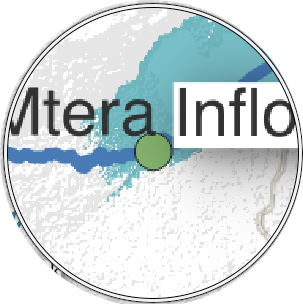 | three km. upstream of 1st Zero Flow monitor section Few kilometers u/s of confluence Great and Little Ruaha | One month before (predicted) 1st zero flow event August 12, 2020 (Alert 1) September 15, 2020 Zero Flow (Alert 2) flow returns on January 3, 2021 |
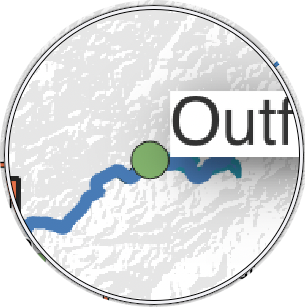 | Ruaha River out of Park (Recession surface flow) | December 4th, 2020 some 30km upstream of Mtera Reservoir (VDAS) |
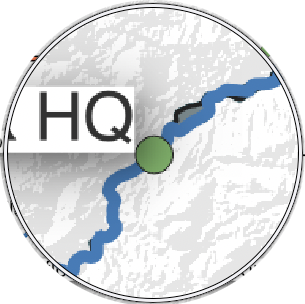 | Msembe Bridge (National Park Headquarter) | no zero flow observed in 2020 – 2021 dry season |
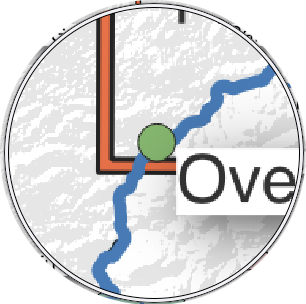 | Ruaha River 40km downstream of N’giriama Sill (Ihefu) | no zero overflow observed in 2020 – 2021 dry season |
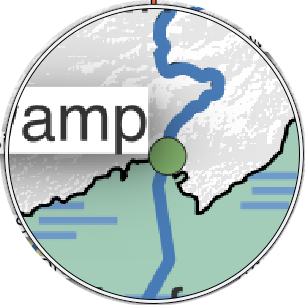 | N’giriama (Ihefu Swamp) | no zero overflow observed in 2020 – 2021 dry season |
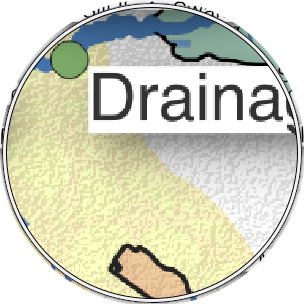 | Ruaha River Section Confluence Mbarali/Ruaha Branch- Ihefu Entry | Zero Drainage September 20, 2020 – November 12, 2020 and November 22, 2020 to December 3, 2020 |
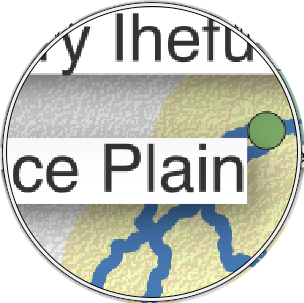 | Confluence Mbarali/Ruaha Branch Zero Flow | no zero flow at Confluence |
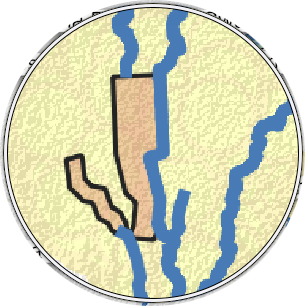 | Kapunga and Mbarali Rice Irrigation Schemes | Increased Rice Irrigation during zero drainage period from Usangu Rice Plain (November 2020) |
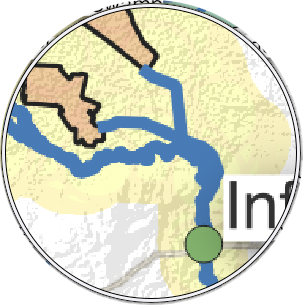 | New NAFCO Headworks diversion low flow Mbarali | All flow Mbarali River diverted into New NAFCO main canal in December 2020 |
 | Return Flow in Ruaha | rains gradually increased in November and December 2020 |
Mbarali River Flow Diverted in December 2020


Increased Rice Irrigation during critical zero drainage period from Usangu Rice Plain (November 2020)


Confluence Mbarali and Ruaha River Branches
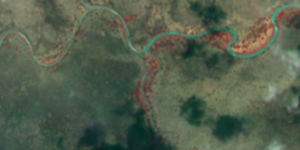
Drainage Critical Flows and Zero Drainage
The analysis for the 2020-2021 low flow period in the Ruaha National Park concludes that although zero drainage did occur according to the observation below on November 29, 2020, zero overflow in the Ruaha as it flows out of the Ihefu Swamp and zero flow in the Ruaha at the Park HQ did not occur or if it occured for a few days only, which may have been missed due to the clouds blocking inspection by the monitor.
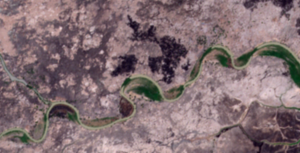
The total length of the zero drainage periods is arguably estimated as two periods of in total 64 days. This could be less for days where floating reed is counted as zero flow. Important is that zero drainage did occur while no zero flow or at least negligible drying of the Ruaha River was observed in the same period of 2020. This would mean that either drainage or groundwater sources from the Ruaha and Tributaries will have sustained the flow during the shoprt critical drainage period that year. The graph below relates the maximum estimate of the zero drainage period in the Ruaha (Park) with merged satellite and gauge data for the upper reaches of the Ruaha Catchment.
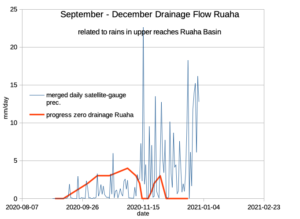
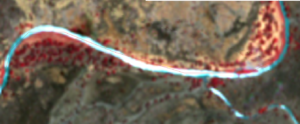
No Overflow N’giriama Sill (Ihefu Swamp)
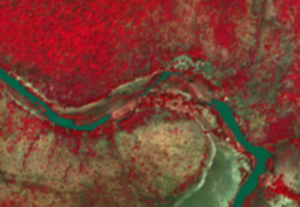
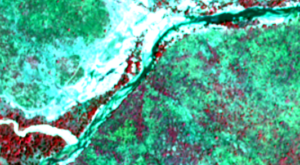
Msembe Bridge Park Headquarter
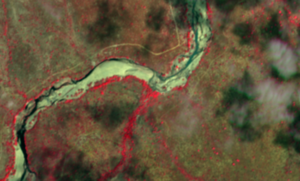
Recession Outflow Park
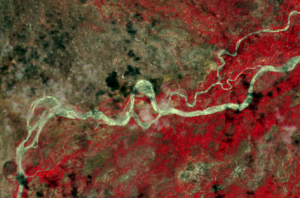
Mtera Reservoir
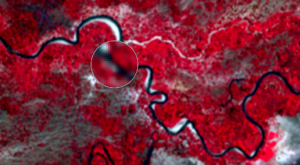
Alert One, 1 month before predicted ZF at Mtera
